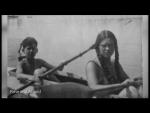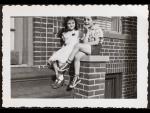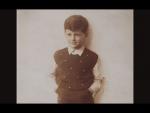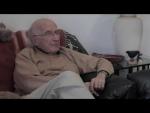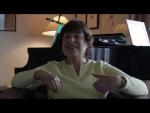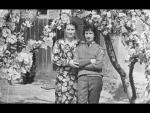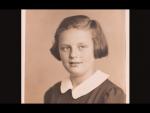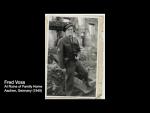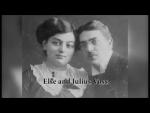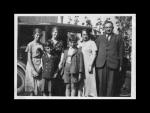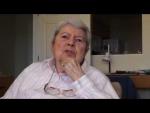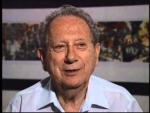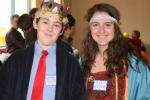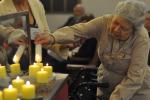Videos of families who escaped the Holocaust and settled in Ithaca is a project of the Holocaust Education Committee of the Ithaca Area United Jewish Community. Videos were created and produced with assistance from Ithaca College Park Scholars, students at the Park School of Communication. Scroll through the videos to see our archive. Printed biographies and memoirs are displayed below the videos.
Oral Histories and Books of Local Interest
Oral Histories of Holocaust Survivors
Biographies and Memoirs: Books of Local Interest

From Auschwitz to Ithaca, by Jake Geldwert with intro by Diane L Wolf, edited by Ross Brann
-Mr. Geldwert recalls his life growing up in the predominantly Jewish town of Auschwitz prior to World War II, the rise of Nazism and outbreak of World War II that results in his imprisonment at the Auschwitz concentration camp, a recounting of that imprisonment, and an account of his eventual liberation, marriage to his wife Jeannette (who was also in Auschwitz), and their post-war adjustment period. He goes on to describe their emigration to America, and new life in Ithaca, New York, where for many years he worked at the grocery story of his wife's relatives. The book ends with Mr. Geldwert's expressed hope that younger generations will "remember what happened to the generation before, to watch out to do the best they can to have a peaceful world."
Something That Belongs to You, an autobiographical play by Roald Hoffmann
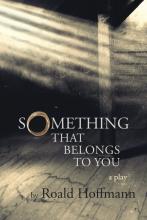 In 37 short scenes, alternating between 1992 in Philadelphia and 1943-1944 in Gribniv, Ukraine, there emerges in “Something That Belongs to You” a story of survival and memory, of complex Ukrainian-Jewish relations, of struggles to remember and forgive. The language of this partially autobiographical play is poetic (especially in the wartime scenes!) and there are in it flashes of humor, even burlesque. The underlying themes are of coming to term with great loss, of the importance of both remembering and forgetting on the way to forgiving, and of the choices, always there, that human beings must make between good and evil in terrible times.
In 37 short scenes, alternating between 1992 in Philadelphia and 1943-1944 in Gribniv, Ukraine, there emerges in “Something That Belongs to You” a story of survival and memory, of complex Ukrainian-Jewish relations, of struggles to remember and forgive. The language of this partially autobiographical play is poetic (especially in the wartime scenes!) and there are in it flashes of humor, even burlesque. The underlying themes are of coming to term with great loss, of the importance of both remembering and forgetting on the way to forgiving, and of the choices, always there, that human beings must make between good and evil in terrible times.
The Hidden Children(1997) by Howard Greenfield (Roald Hoffmann's story as a Hidden Child is one of the 15 stories)
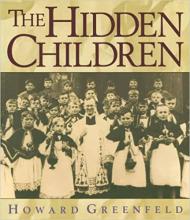 From School Library Journal
From School Library Journal
Grade 4 Up-The experiences of 15 children who survived the Holocaust in hiding are presented here within the historical context of the Nazi rise to power and World War II. These youngsters were sheltered in a variety of private homes and institutions by "righteous Gentiles," family friends, and those simply looking for additional money; some were resented, some treated compassionately, and others mistreated and abused physically. Greenfeld has interviewed these survivors, who are now living in the U.S., and has recorded their memories. Both the mundane and the unusual are remembered; the most commonly described feelings are the fear that family members would perish and the sense of guilt at having survived while others did not. There are reminiscences of narrow escapes and poignant remembered pleasures of edible treats. While the chronological arrangement of the book makes it difficult to follow a specific child's story (it is possible by using the excellent index), it succeeds admirably in allowing readers to place the experiences described within the framework of the Holocaust. An excellent selection of black-and-white photographs and an open design contribute to making this an important and accessible resource.
Susan Kaminow, Arlington County Public Library, VA
Copyright 1994 Reed Business Information, Inc.
Witness to Annihilation, Surviving the Holocaust: A Memoir, by Samuel Drix (father of Ithaca High school teacher)
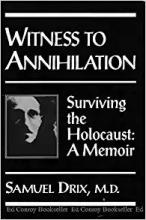 When the German Army captured Lwów, Poland, in 1941, the city contained a vibrant Jewish community of 160,000 people. By 1945, all but a few hundred were dead. Witness to Annihilationis the book that Samuel Drix vowed he would write. Drix endured nearly a year in the Janowska concentration camp, escaped and hid from the Nazis, was liberated by the Red Army, and eventually fled from behind the Iron Curtain to America. This rare Holocaust memoir by a caring physician will both horrify and inspire.
When the German Army captured Lwów, Poland, in 1941, the city contained a vibrant Jewish community of 160,000 people. By 1945, all but a few hundred were dead. Witness to Annihilationis the book that Samuel Drix vowed he would write. Drix endured nearly a year in the Janowska concentration camp, escaped and hid from the Nazis, was liberated by the Red Army, and eventually fled from behind the Iron Curtain to America. This rare Holocaust memoir by a caring physician will both horrify and inspire.
Miracles, Milestones, & Memories: A 269-Year Reflection, 1735-2004 by Fred Voss, (Fred Voss, retired to Ithaca -- a local Holocaust speaker since 2002)
 This memoir begins with the history of nine generations of the Voss family. For nearly 200 years, like most Jews in Germany, they lived in peace. Then, in 1933, the Nazi government came to power and denied Jews the right to live in Germany. Two brothers, Emil ("Ed") and Fred Voss, escaped Germany with their parents and one grandmother, but not before suffering as victims of the persecution against Jews. In this book, Fred Voss includes his brother's memories and his own, tracing the story of how they found their freedom again in the United States of America.
This memoir begins with the history of nine generations of the Voss family. For nearly 200 years, like most Jews in Germany, they lived in peace. Then, in 1933, the Nazi government came to power and denied Jews the right to live in Germany. Two brothers, Emil ("Ed") and Fred Voss, escaped Germany with their parents and one grandmother, but not before suffering as victims of the persecution against Jews. In this book, Fred Voss includes his brother's memories and his own, tracing the story of how they found their freedom again in the United States of America.
Yours Always: A Holocaust Love Story by Kitty Zilbersmit (1996) – (Occasional Publications of the Department of Near Eastern Studies and the Program of Jewish Studies, Cornell University, V.2)
 Yours Always is the true account of a young, engaged Dutch Jewish couple suddenly separated by the Nazi invasion. Distinguishing this work is the diary of Kitty's fiancee, Don, who joined a Dutch brigade during the war. This diary, Red Cross letters, and Kitty's memoirs make this an unusual recollection of that terrible time.
Yours Always is the true account of a young, engaged Dutch Jewish couple suddenly separated by the Nazi invasion. Distinguishing this work is the diary of Kitty's fiancee, Don, who joined a Dutch brigade during the war. This diary, Red Cross letters, and Kitty's memoirs make this an unusual recollection of that terrible time.
When Heaven's Vault Cracked Zagreb Memories by Zdenka Novak (mother of retired Ithaca College Professor) -- self published online for download
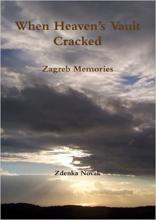 Zdenka Novak lived with her sister and parents in Zagreb, Yugoslavia before World War II. As a bright and talented student, her father sent her to Paris in September 1939 to study languages. Zdenka returned quickly as the war started, thinking that she had escaped the worst in France by returning to Zagreb and marrying her beloved Fritz. While following the news on the world stage, she continued her studies at the University of Zagreb. Her family's fate changed on April 6, 1941 when Nazi Germany invaded Yugoslavia. Zdenka's parents and her sister were arrested by the Nazis, and she was exiled to Susak (under Italian occupation). After Germany invaded Italy in 1943, Zdenka joined the Partisans living in the woods of Croatia, surviving under difficult conditions. At the end of the war, she returned to Zagreb under communist rule, but eventually spent the remainder of her life in Israel.
Zdenka Novak lived with her sister and parents in Zagreb, Yugoslavia before World War II. As a bright and talented student, her father sent her to Paris in September 1939 to study languages. Zdenka returned quickly as the war started, thinking that she had escaped the worst in France by returning to Zagreb and marrying her beloved Fritz. While following the news on the world stage, she continued her studies at the University of Zagreb. Her family's fate changed on April 6, 1941 when Nazi Germany invaded Yugoslavia. Zdenka's parents and her sister were arrested by the Nazis, and she was exiled to Susak (under Italian occupation). After Germany invaded Italy in 1943, Zdenka joined the Partisans living in the woods of Croatia, surviving under difficult conditions. At the end of the war, she returned to Zagreb under communist rule, but eventually spent the remainder of her life in Israel.
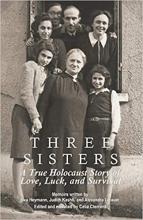 THREE SISTERS: A True Holocaust Story of Love Luck and Survival by Celia Clement chronicles the memoirs of Alexandra age 11, and her sisters, 15-year-old Eva and 14-year-old Judith as they recount the story of their escape from the Nazis. Celia, the author, grew up in Ithaca and is the daughter of Alexandra, a former elementary school French teacher and later lecturer at Cornell, and Raphael Littauer.
THREE SISTERS: A True Holocaust Story of Love Luck and Survival by Celia Clement chronicles the memoirs of Alexandra age 11, and her sisters, 15-year-old Eva and 14-year-old Judith as they recount the story of their escape from the Nazis. Celia, the author, grew up in Ithaca and is the daughter of Alexandra, a former elementary school French teacher and later lecturer at Cornell, and Raphael Littauer.
Leaving behind their life of luxury in Leipzig Germany, the girls describe unimaginable hunger, deprivation, and fear. The memoirs of Eva, Judith, and Alexandra interweave as they recount each step of their perilous flight: smuggled into Belgium without their parents, Eva’s incarceration in Gurs, a French internment camp, enduring three weeks hiding in a tiny shed in southern France, the family’s imprisonment in Lyon, and ending with their arduous trek, smuggled through the Alps into Switzerland. Family love, music, and the close friendship of strangers are the essential ingredients that sustain them through the hardships they face at every step. Two factors ultimately saved them: rescuers and enormous luck.
A unique element of this book is that each chapter opens with the historical backdrop, providing the reader with an understanding of the progression of antisemitism in Germany and France, the course by which Hitler dismantled democracy, the role the French adopted as Nazi collaborators, and how the Swiss policies towards Jews were implemented.
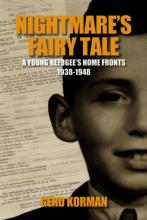 Nightmare's Fairy Tale: A Young Refugee's Home Fronts, 1938-1948 by Gerd Korman
Nightmare's Fairy Tale: A Young Refugee's Home Fronts, 1938-1948 by Gerd Korman
Fleeing the Nazis in the months before World War II, the Korman family scattered from a Polish refugee camp with the hope of reuniting in America. The father sailed to Cuba on the ill-fated St. Louis, the mother left for the United States after sending her two sons on a kindertransport assembling near Warsaw. One of the sons was Gerd Korman, whose memoir Nightmare's Fairy Tale follows his own path-from the family's deportation from Hamburg, through his time with and Anglican family in rural England, to the family's reunited life in New York City's Jewish neighborhoods.Korman's story is at once a classic account of American immigration and uniquely Jewish tale of trauma, anxiety, and familial separation during and after the Holocaust. Drawing on his own personal letters and other document, Korman-now and emeritus professor of history-deftly and sensitively explores the extraordinary pressures on Jewish children during these years. Displaced from home and family, and relying on the kindness of Christian and Jewish organizations and individuals, these children could never fully belong in new wartime surroundings. Even after Korman and his brother were finally reunited with both their parents in New York, their lives remained charged by ethnic tensions and by political conflict within the American Jewish community. But youth was not entirely stamped out: Korman vividly recounts his life in New York as something close to a typical soccer-loving teenager. With elements of both nightmare and fairy tale, his memoir plumbs the depths of twentieth-century history to tell the remarkable story of one of its survivors.


